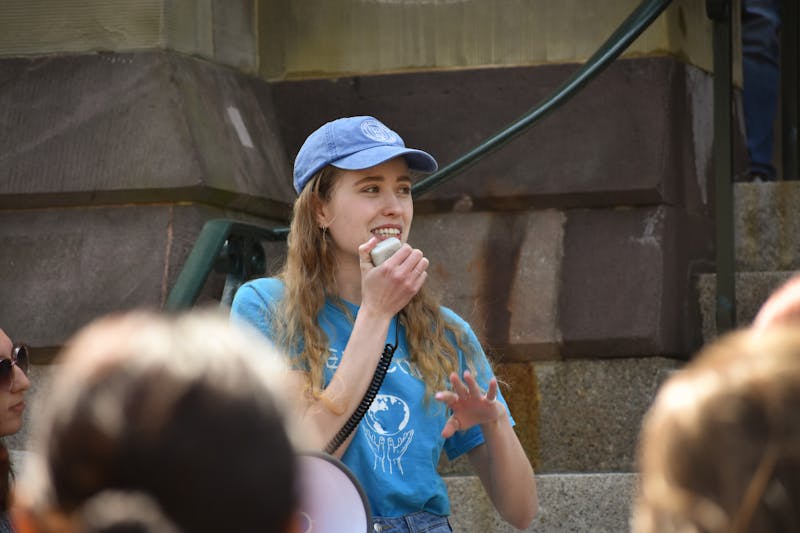
What do you get when you put a Penn professor, two TAs and a group of eager students in a 25-foot-long, three-foot-deep hole in Vineland, N.J.?
Anthropology 219.
The course, offered every fall semester since 2001, takes two sections of students out of the classroom and into the Pine Barrens of New Jersey to conduct historical archaeology as a part of the South Jersey Project.
The brainchild of University Museum of Archaeology and Anthropology curator Robert Schuyler, the project is a long-term study of the cultural evolution of the Vineland area from 1850 to the present day.
Schuyler, the associate curator-in-charge of the Historical Archaeology section of the museum, originally began his fieldwork in a small mining town in the Colorado River Valley but decided to relocate the project to Southern New Jersey to incorporate Penn students.
This semester the students excavated a plot of land next to the Vineland Historical and Antiquarian Society -- one of the project's sponsors -- that once served as a backyard to several homes.
After taking precise measurements of the area to be excavated, the students -- armed with pickaxes and shovels -- meticulously dug out sections of the plot of land under the guidance of Schuyler and Teaching Assistants Matthew Johnson and Benjamin Pykles.
The soil is then screened for materials left by humans such as animal bone fragments, pieces of ceramic pottery, buttons, parts of dolls and toys and glass.
Schuyler said that pottery and bottles with trademarks are particularly valuable finds, since they better enable researchers to date soil deposits.
The students enrolled in the course are as varied as the objects they excavate, with a mix of Penn undergraduate and graduate students, students from the Pennsylvania Academy of Fine Arts, Anthropology majors, non-majors and those just interested in the subject -- like senior economics major Aurelio Marquez.
"I was told it was fun. A friend of mine who is an [international relations] major told me it was good so I decided to take it."
Even though Marquez enjoys the course, he admitted that it does have a downside.
"Waking up on Friday is the worst," he said.
The students report to the museum at 8 a.m. every Friday or Saturday morning and then take a 45-minute ride to the site, where they work in the field excavating objects until about 3:30 p.m.
Jordan Pickrell, a second-year graduate student in historical archaeology, finds the hands-on course work refreshing.
"It's not bad at all," she said. "I think it's nice to get out of Philly; it's a nice change of scenery."
The students do get breaks in the day, enjoying lunch from Tony's Pizza and occasional dance performances from TA Pykles.
With the class size small -- averaging 15 students per section each semester -- TA Matthew Johnson said that he is able to personally connect with his students.
"[Assisting] a course like this, you really get to know students on a much deeper level -- much more than in a lecture course," Johnson said. "You get to know their interests and activities outside of the classroom -- it's one of the really delightful aspects of being a TA for this course."
The Department of Anthropology and Schuyler offer a supplemental lab course in the spring, where students clean, examine and research the artifacts found during the fall dig.
Because of the ongoing nature of the project, students can take both the fall and spring courses as many times as they like. Feeling a connection to the project, many students take the courses multiple times.
At one of the digs, Jill Gaieski, a former lawyer who returned to graduate school to study Anthropology, joked about her decision to switch careers.
"I could be wearing heels and a St. John suit right now," she said.
Instead, she was covered in dirt wearing workboots and sweats.
The Daily Pennsylvanian is an independent, student-run newspaper. Please consider making a donation to support the coverage that shapes the University. Your generosity ensures a future of strong journalism at Penn.
DonatePlease note All comments are eligible for publication in The Daily Pennsylvanian.







